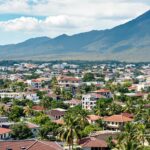Traditional Mexican markets serve as vibrant, living museums of the country’s rich cultural heritage, offering both visitors and residents a genuine look into centuries-old traditions that have roots in pre-Hispanic times.
Known as mercados and tianguis, these markets have evolved from ancient Mesoamerican trading centers. The National Autonomous University of Mexico notes that the Tlatelolco market in Tenochtitlan once hosted an astonishing 40,000 to 60,000 people, leaving even the Spanish conquistador Hernán Cortés in awe of its scale and vibrancy.
Today, Mexico City alone boasts 353 public markets and 1,367 tianguis, as reported by the capital’s Economic Development Ministry. While mercados are permanent buildings open nearly daily, tianguis are temporary street markets set up on specific days of the week.
These markets display a wide range of specialties. For example:
- The Mercado de la Lagunilla is renowned for antiques.
- The Mercado de Sonora is famous for its witchcraft items.
- Other markets may focus on fresh produce, textiles, or cleaning products.
Shopping at these traditional venues offers sensory experiences that supermarkets cannot match. The atmosphere is abuzz with vendors calling out their products, workers navigating narrow aisles with hand trucks, and the mingling scents of fresh foods and traditional drinks like champurrado.
Beyond shopping, regular patrons or “marchantas” of local markets build communal bonds. Regular shoppers often forge relationships with vendors who remember their names and preferences, fostering a sense of belonging that is a crucial part of Mexican social culture.
The markets also reflect seasonal changes and traditions in Mexico, featuring special items during celebrations like the Day of the Dead in October and November.
For those eager to experience these cultural institutions, official public markets can be found by searching “Mi Mercado cerca de mí” online, with most locations being named in the format “Mi Mercado” followed by a specific designation.
For more details, you can visit the source.


Leave a Reply